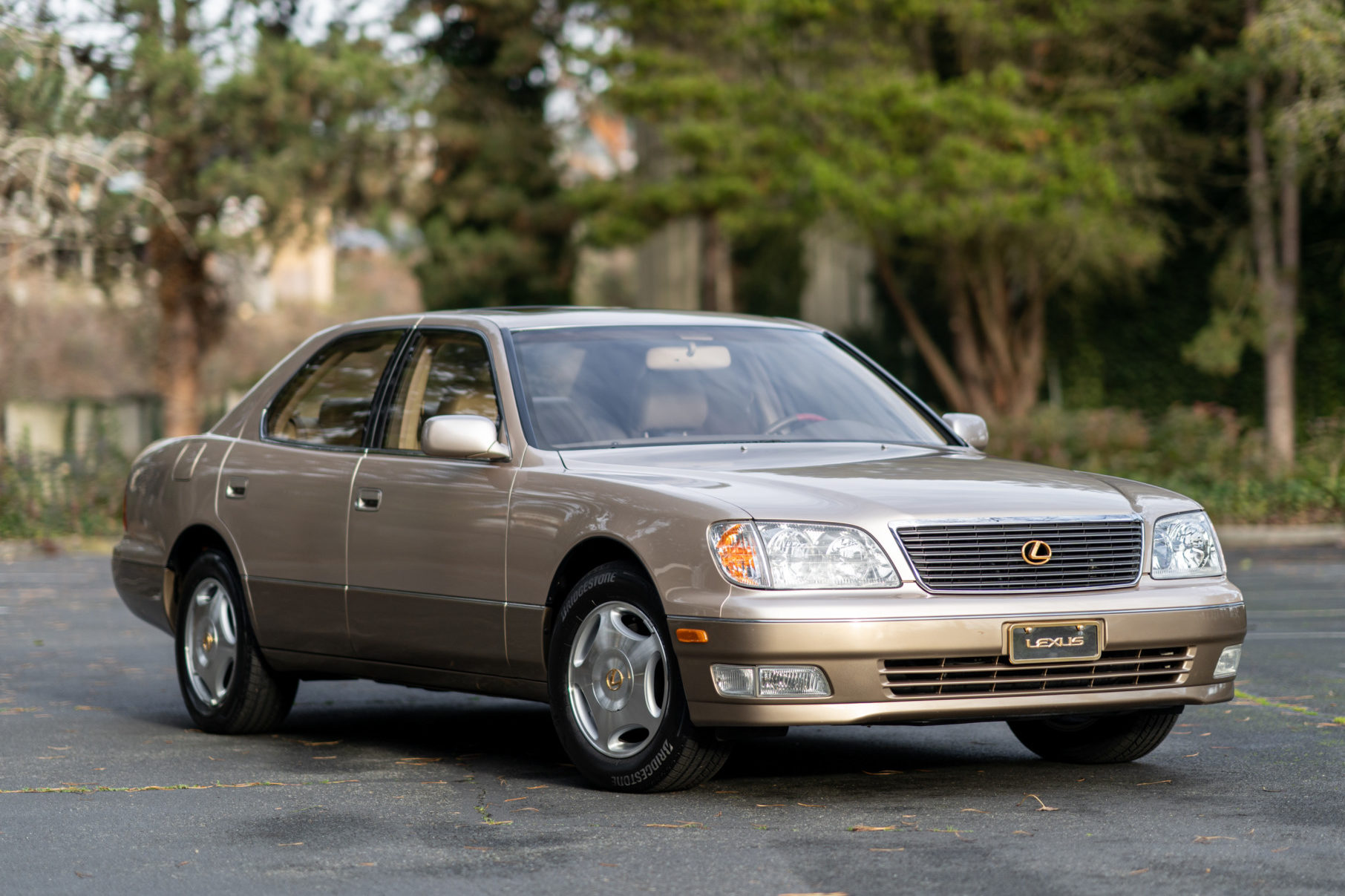Let’s face it: not all cars are created equal. Some are like golden retrievers, loyal, forgiving, and always excited to see you, even after you’ve ghosted them for a year.
They’re temperamental cats that stop talking to you if you miss one oil change. If you’re the kind of person who occasionally forgets they even own a car, here’s a no-nonsense list of five you can depend on, and five that’ll give up on you faster than your New Year’s resolutions.
Let’s be honest: most cars are petty. Leave them sitting for too long and they’ll act like you broke up with them; dead battery, check engine light, maybe even a flat tire or two, just for drama.
But not all rides are that sensitive. Some cars are built different. They’ll sit quietly for months (or a whole year), collect dust, endure weather, ignore your negligence and still fire up like it’s just another Tuesday.
5 Cars That’ll Start After a Year of Neglect
This list is for the real-world drivers. The folks who disappear for a while, forget to crank the engine, and come back hoping for a miracle. Good news: miracles exist, and they usually have a Toyota or Honda badge on the hood.
These five cars are legendary for their “set it and forget it” resilience. If you’re looking for something that’ll start after being ghosted for 12 months straight, keep reading. These are your automotive ride-or-dies.
1. Toyota Corolla
Leave it in a field, underwater, or on the surface of Mars, it will crank over. Toyota’s engineering is famously overbuilt for what you pay. The Corolla, especially from the late 2000s and early 2010s, is notoriously reliable even when criminally neglected. Battery dead? Swap it. Engine? Still purring.
The Corolla’s lackluster powertrain doesn’t offer much to get excited about, though it does include an available manual transmission and a slightly more powerful LE Eco variant. The standard engine is a 1.8-liter four-cylinder that delivers an underwhelming 132 horsepower.
The LE Eco comes with a specially tuned version of the same engine, which produces 140 horsepower and slightly less torque. A continuously variable automatic transmission (CVT) is standard across the lineup, while a six-speed manual is available only on the SE trim.
“Fasten your seatbelt, check your mirrors, floor the accelerator and . . . wait as the Corolla moseys up to speed.” Driving the Corolla is anything but thrilling, and its weak braking performance doesn’t align with its otherwise solid safety reputation.
The SE and XSE trims do handle differently from the rest, thanks to their larger 17-inch wheels and tires, which improve cornering grip but also result in a stiffer, less forgiving ride.
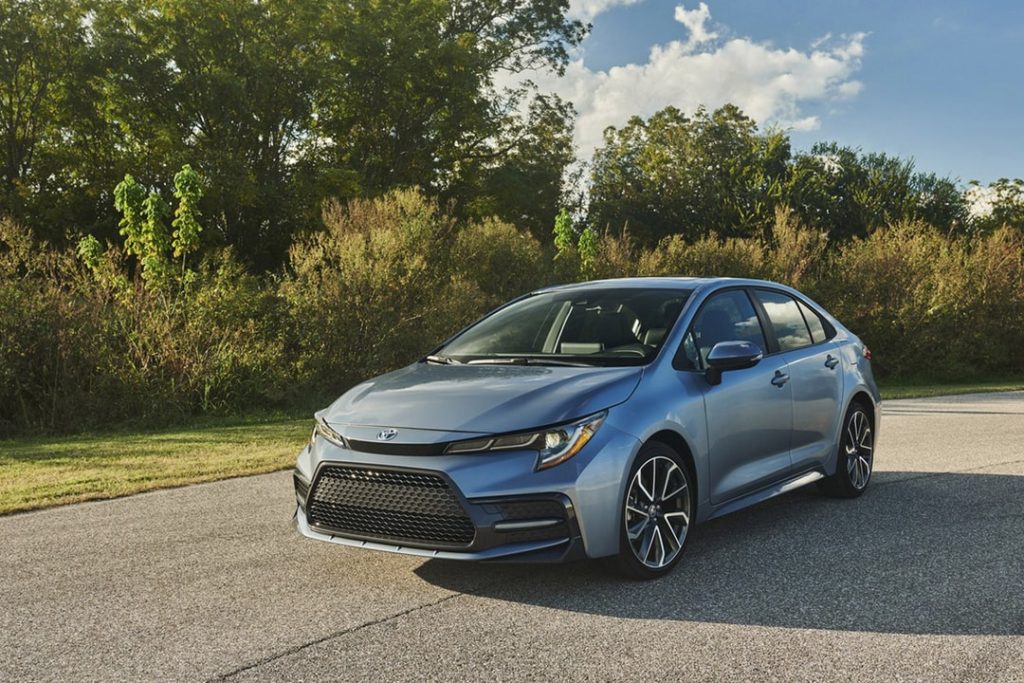
When we tested the XSE, it exhibited moderate body roll while merging onto a freeway ramp, and the suspension felt noticeably rigid over uneven pavement. When stacked up against the nimble and more refined Mazda 3, the Corolla simply can’t keep up.
Fuel economy ratings have shifted over the years as the EPA’s testing and reporting procedures have evolved. For the most accurate and up-to-date information on both current and past models, it’s best to visit the EPA’s website and use the Find & Compare Cars tool.
Inside, base-model Corollas offer a minimalist cabin with few comfort or convenience features. The dashboard has been updated to include circular outboard air vents in a functional, if unremarkable, layout. Automatic climate control is redesigned but only available on trims above the base L model, which sticks with manual A/C.
Amenities like heated front seats and an eight-way power-adjustable driver’s seat are exclusive to the XLE and XSE trims. The interior of our tested XSE was a mix of low-grade plastics and fingerprint-prone glossy-black trim.
Although the Corolla outperformed some sedan competitors in carry-on bag capacity, its practicality is held back by average cubby storage and a rear seat that’s difficult to fold down. While the various storage compartments inside are sufficient for typical everyday use, they don’t stand out in any meaningful way.
Also Read: Top 10 Long-Lasting Cars That Get Over 30 MPG
2. Honda Civic (2006–2015)
Honda Civics from this era are basically lab-tested to survive urban warfare. As long as you didn’t let mice turn your engine bay into an AirBnB, a Civic will forgive you. Fluids dry? Coolant turning to jelly? It’ll still try to start like a loyal puppy.
The 2013 Honda Civic stands out as a strong choice in the used compact car segment, offering a well-rounded experience with broad appeal.
It delivers a smooth, comfortable ride and maintains a confident feel through turns. Its four-cylinder engines are both energetic and fuel-efficient, making it a practical daily driver. Inside, the Civic features quality materials that give it a refined touch for the class.
It also earns high scores for safety and reliability, further solidifying its reputation. The only area where the Civic falls short is in practicality; it’s only offered in sedan and coupe body styles, so if you need the versatility of a hatchback, you’ll have to look elsewhere.
You can expect to pay anywhere from $9,000 to $16,400 for a used 2013 Honda Civic, with the average price landing around $12,600. Actual costs will vary depending on the vehicle’s mileage, condition, features, and where you’re buying.
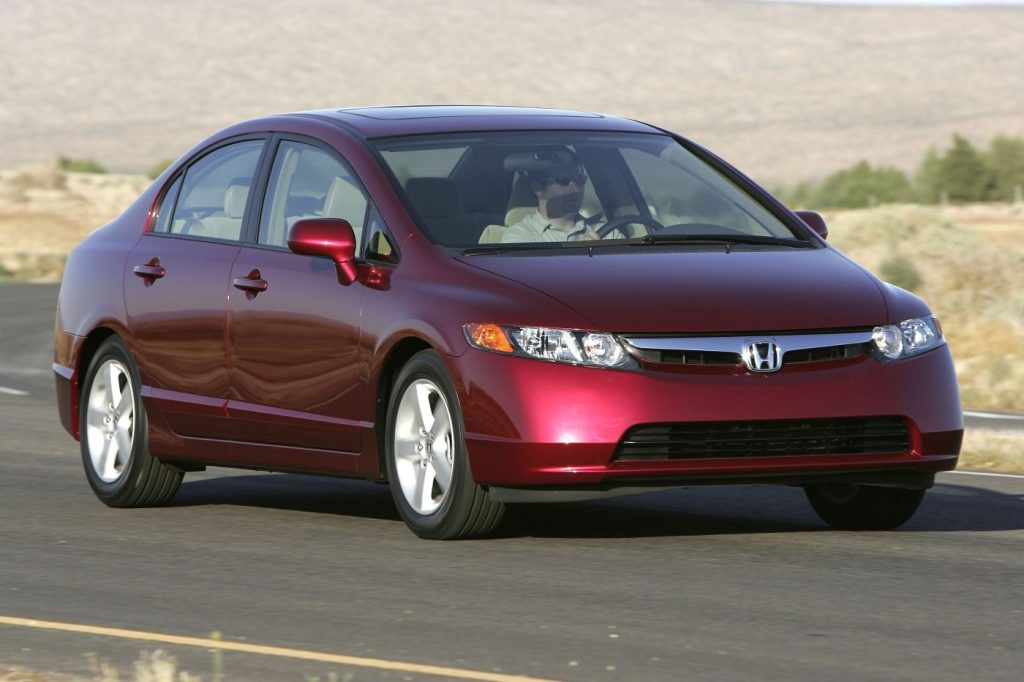
A brand-new 2018 Honda Civic, on the other hand, starts at $18,940. It introduces a hatchback body style, which offers more practicality for hauling larger items. The newer model is also more agile and enjoyable to drive, and it features a more upscale interior with modern tech like forward collision warning, Apple CarPlay, and Android Auto.
These improvements make the 2018 version a better vehicle overall, but it comes at a significantly higher price. If you’re after a reliable, engaging small car without the premium price tag, the 2013 Civic still delivers great value.
That said, if you’re looking toward the higher end of the 2013 Civic’s price range, it’s worth checking out some new subcompact alternatives. The refined 2018 Kia Rio starts at $13,900, while the 2018 Chevrolet Sonic and Toyota Yaris iA both start just under $16,000. These newer cars offer modern features and warranties, which could sway budget-conscious buyers.
When considering which model year of the Honda Civic is best, the ninth-generation lineup – from 2012 to 2015 – is generally solid across the board.
All models offer strong reliability, responsive handling, good fuel economy, and the same engine choices. Still, it’s worth noting a few key upgrades. The 2013 model received a noticeable interior refresh and came standard with a rearview camera. In 2014, Honda introduced the LaneWatch blind spot camera, though many find it more distracting than helpful.
Honda also made a major change in 2014 by replacing the five-speed automatic transmission with a continuously variable automatic transmission (CVT).
While CVTs can sometimes produce annoying engine noise, the Civic’s version is smooth and helps slightly improve fuel efficiency. Both transmissions are solid, so choosing one over the other mostly comes down to personal preference.
3. Lexus LS400
This car is a legend. Built in the ’90s when Toyota wanted to show the world they could out-German the Germans. LS400s often start even when they’ve been sitting for years. Yes, actual years. The electronics hold up, the engine seals don’t disintegrate, and it might even ride smooth the first time back.
The first models from Acura, Infiniti, and especially Lexus were defined by excellent, accommodating dealerships and vehicles that stood apart from their German competitors in the best ways.
Unlike the often finicky and expensive-to-maintain European luxury cars of the time, these Japanese entrants were simple to live with. They didn’t demand constant maintenance or special attention.
Instead, “they just coddled and comforted.” The introduction of these brands made it clear that mechanical dependability and ease of ownership could matter more to consumers than a storied legacy. Their arrival proved that frugality and mechanical forgiveness could trump tradition, ushering in a new era of accessible luxury.
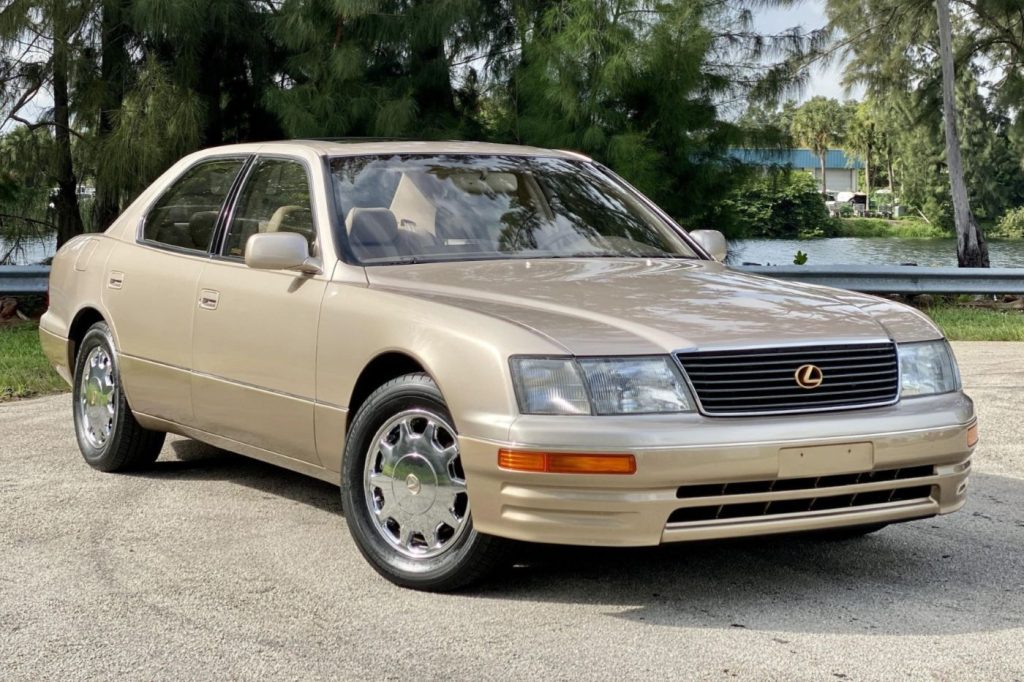
This particular vehicle was a front-engine, rear-wheel-drive sedan designed to seat five passengers comfortably across four doors. It carried a base price of $35,350, with the tested model totaling $39,563.
Under the hood, it featured a DOHC 32-valve V-8 engine with an aluminum block and heads, utilizing port fuel injection. The displacement measured 242 cubic inches (3969 cc), delivering 250 horsepower at 5600 rpm and 260 lb-ft of torque at 4400 rpm. The powertrain was paired with a 4-speed automatic transmission.
Dimensionally, the car rode on a 110.8-inch wheelbase and stretched 196.7 inches in length, 71.7 inches in width, and stood 55.3 inches tall. Trunk volume came in at 14 cubic feet, and the vehicle had a curb weight of 3750 pounds. Braking from 70 to 0 mph took 188 feet, and roadholding on a 300-foot-diameter skidpad registered 0.79 g.
Fuel economy was rated by the EPA at 18 mpg combined, with 16 mpg in the city and 22 mpg on the highway. During Car and Driver’s testing, the observed fuel economy was 19 mpg. These specifications and results are based on data from November 1991.
4. Ford Crown Victoria (Police Interceptor)
Even if you don’t drive it for a year, it’ll still feel like it’s ready to chase down a getaway car. These things were made to idle all day and survive urban abuse. You could leave one buried in sand for a year and it’d still show up to work with a cup of coffee.
In 1992, the Crown Victoria underwent a major redesign that signaled the beginning of its third generation. This new version brought refreshed styling along with notable advancements in both safety and performance.
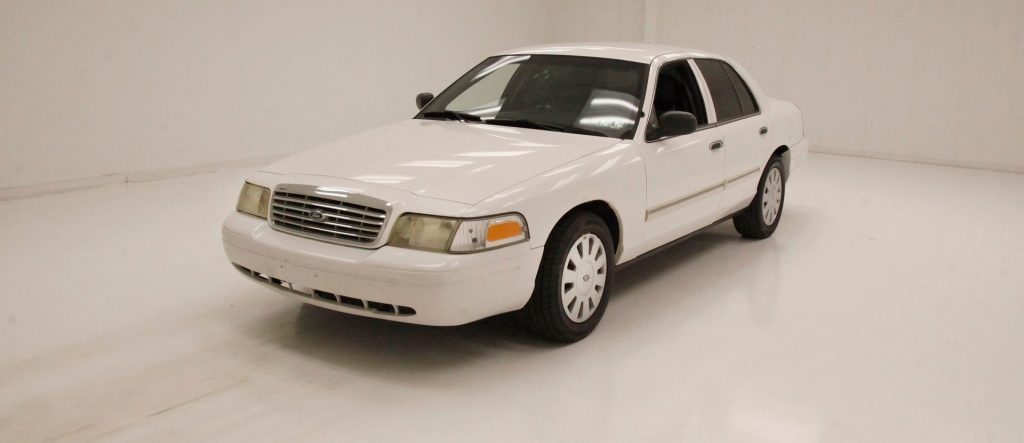
One of the most significant upgrades was the introduction of the 4.6-liter Modular V8 engine, which took the place of the older V8 powerplants. Throughout its run, the Crown Victoria maintained its reputation as a staple in law enforcement and fleet service, appreciated for its durable build and roomy interior.
As the years went on, the Crown Victoria received a series of updates and facelifts. Despite these changes, its core design and overall appeal stayed largely the same.
In 1998, Ford launched the Police Interceptor variant of the Crown Victoria, which was purpose-built for law enforcement. This model featured performance and durability enhancements designed specifically to meet the rigorous demands of police work.
Also Read: 5 Engines That Never Burn Coolant and 5 That Always Need Top-Ups
5. Subaru Outback (pre-2014)
This is the car of people who forget where they parked it… for months. Older Outbacks are built like they expect to be left in a snowy cabin for a full season. Solid engines, decent electrical longevity, and a loyal following for a reason.
The 2014 Subaru Outback stands out as an excellent option in the used wagon market. It offers generous space for both passengers and cargo, delivers above-average reliability, and features impressive available collision-avoidance technology.
Under the hood, the 2014 Outback comes standard with a 173-horsepower four-cylinder engine. For those seeking more power, a 256-horsepower six-cylinder engine is available.
All-wheel drive comes standard across the lineup, reinforcing the Outback’s all-weather capability. With the four-cylinder engine, buyers can choose between a six-speed manual transmission and a continuously variable automatic transmission (CVT). The six-cylinder model pairs exclusively with a five-speed automatic.
The four-cylinder delivers adequate acceleration and earns an impressive 24 mpg in the city and 30 mpg on the highway, placing it among the more fuel-efficient vehicles in its class. The six-cylinder provides a more spirited driving experience but at the cost of fuel efficiency, achieving only 18 mpg city and 24 mpg highway.
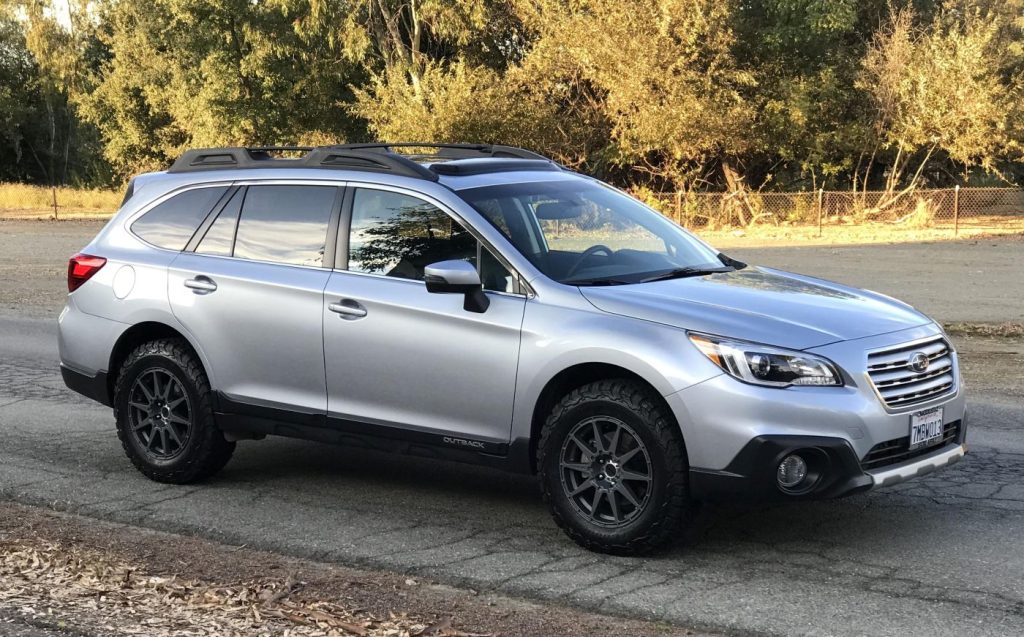
On the road, the Outback offers a smooth and composed ride. Its standard all-wheel-drive system gives it solid grip in varying weather conditions, and it can handle mild off-road terrain. When properly equipped, it has a towing capacity of 3,000 pounds.
The cabin of the Outback comfortably accommodates up to five passengers. The interior is quiet, and the front seats are well-cushioned, with ample headroom and legroom for both rows.
The rear seats can recline and fold flat, increasing cargo capacity from 34.3 cubic feet to an impressive 71.3 cubic feet. In the second row, there are two complete sets of LATCH connectors for securing child safety seats. Visibility is strong from all angles, which enhances overall driving confidence.
Inside, the dashboard has a straightforward design and is composed largely of hard plastics. Base trims include a CD player, a USB port, Bluetooth connectivity, and a basic four-speaker audio system that delivers underwhelming sound quality.
Higher trims offer a 4.3-inch LCD screen and upgraded audio components. Buyers can also opt for a rearview camera and a 7-inch touchscreen with satellite navigation. However, the touchscreen has sluggish response times, which can make operating it frustrating at times.
5 Cars That Die If You Blink Too Long
These are the cars that don’t just require attention, they demand it. High-maintenance, fragile, and often more work than they’re worth, these five models will punish you the moment you stop babying them.
1. BMW 7 Series (Especially E65/E66: 2002–2008)
Even if you’re giving it daily affirmations and premium gas, this car is a ticking time bomb. Leave it alone for a week and it’ll throw codes like confetti. Battery drain issues, failing electronics, and that classic “why is my dash a Christmas tree?” feeling.
BMW’s flagship luxury sedan has long been synonymous with innovation, but the 2025 BMW 7 Series doesn’t deviate much from the previous year’s model. Beyond its unmistakably bold front grille, it continues to deliver the expected array of luxury features, both standard and optional.
The most notable—and really, the only—update for 2025 is that the Panoramic Sky Lounge LED Roof now comes standard on both the 740i and the hybrid 750e xDrive models.
Aside from that, the 2025 7 Series remains a familiar figure in the luxury landscape, though its styling continues to divide opinion. “Once you get past that big ol’ grille, you’ll find the usual accompaniment of opulence.”
All 2025 BMW 7 Series models are powered by turbocharged six- or eight-cylinder engines, paired with an eight-speed automatic transmission sourced from ZF and equipped with paddle shifters.
On the lower end of the spectrum—though calling a $100,000 sedan “low-end” is a stretch—you’ll find the 740i and 740i xDrive. These models use BMW’s B58 inline-six engine, producing 375 horsepower. For buyers seeking a more eco-conscious option, the plug-in hybrid 750e combines a traditional engine with an electric motor to deliver a total output of 483 horsepower.
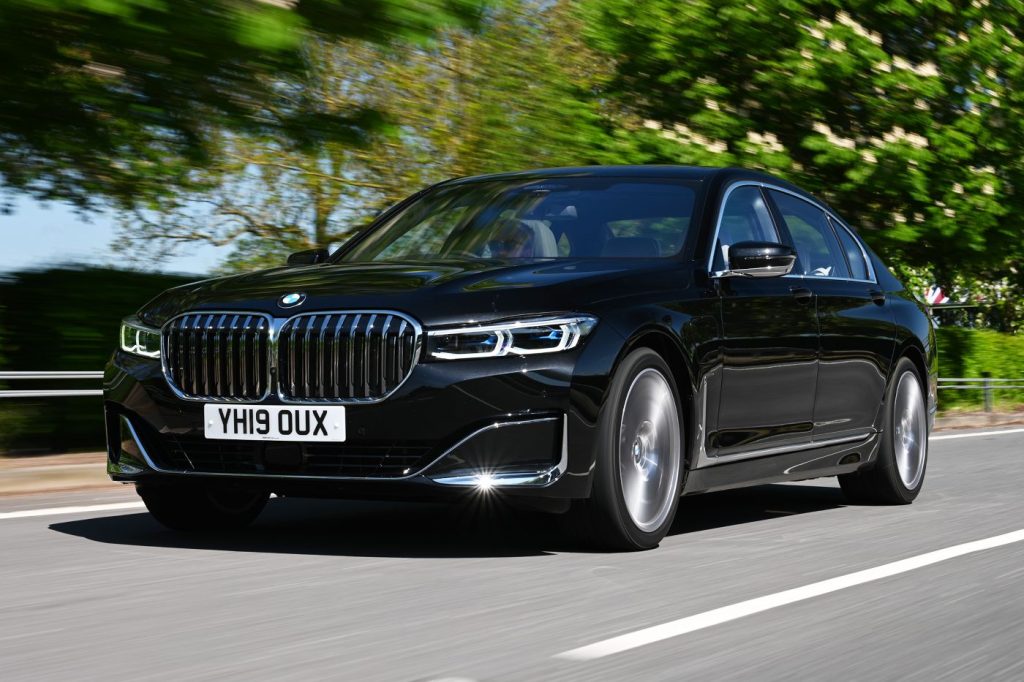
Sitting at the top of the gas-powered lineup is the 760i xDrive, which is currently the fastest variant in the range. According to BMW, it can sprint from zero to 60 mph in just 4.1 seconds.
What makes it especially compelling is the engine: this model uses the S68, a twin-turbo 4.4-liter V8 sourced from BMW M, effectively making it a spiritual “M7.” It puts out an impressive 536 horsepower and 553 pound-feet of torque.
In terms of efficiency, the hybrid 750e xDrive is likely to offer the best fuel economy, although it has not yet been officially rated by the EPA. BMW estimates it will achieve 65 MPGe and offer around 35 miles of all-electric range—ideal for shorter daily commutes. However, if you’re seriously considering electrification, stepping up to the all-electric 2025 BMW i7 might be a more suitable option.
For those sticking with traditional mild-hybrid powertrains—all 7 Series models are equipped with a 48-volt system—the 740i remains the most fuel-efficient. The rear-wheel-drive version is estimated at 25 mpg city and 31 mpg highway, for a combined 28 mpg.
Adding xDrive all-wheel drive drops city mileage by 1 mpg, while highway efficiency remains unchanged. On the other end of the spectrum, the V8-powered 760i xDrive is significantly less efficient, returning an EPA-estimated 20 mpg combined.
2. Range Rover (Any year, pick one)
You want to believe it’s changed. It looks so good, it’s seductive… but it will betray you. If you leave a Range Rover parked too long, expect a dead battery, locked air suspension, a half-functioning infotainment system, and some mystery lights.
The 2025 Land Rover Range Rover continues its tradition of blending exceptional off-road capability with luxurious comfort. As a longstanding staple in the large luxury SUV segment, the Range Rover enters its fifth generation—originally launched in 2022—offering both standard and long-wheelbase versions, various seating configurations, and a selection of powertrains. Competitors in this space include the BMW iX, Cadillac Escalade, and Rivian R1S.
For the new model year, all trims now feature illuminated door sills and improved proximity locking and unlocking. However, the Activity Key wristband has been discontinued.
The P550e plug-in hybrid powertrain, which was previously limited to the long-wheelbase version, is now available in the standard-wheelbase body. In the SE P530 standard-wheelbase model, a premium audio system is now standard equipment, while the upgraded air suspension becomes an optional feature.
Additionally, the SE trim receives a twin-blade sun visor exclusively on the driver’s side. A new exterior color, Otsuni White, has also been added to the premium metallic paint selection.
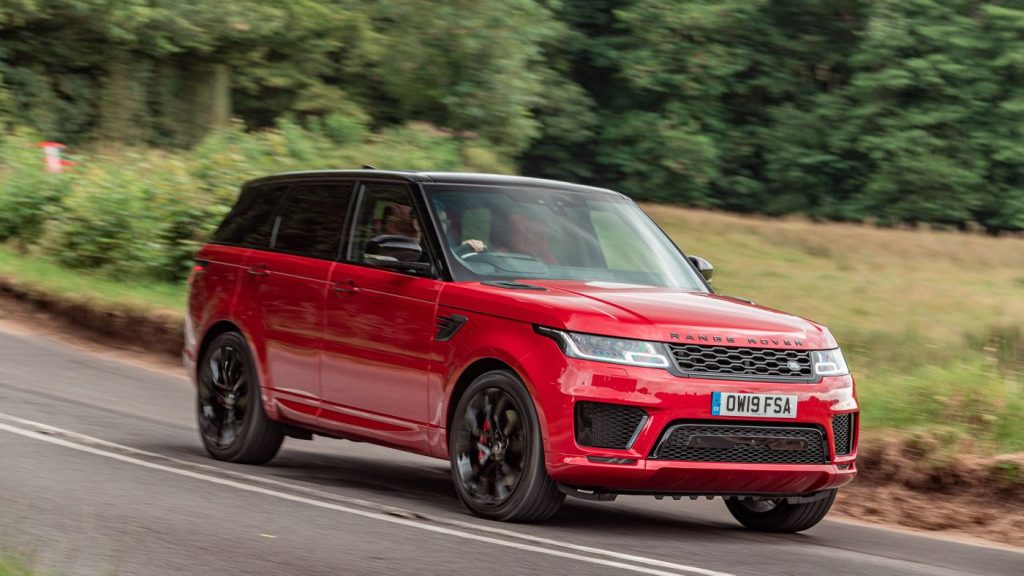
The Range Rover maintains an elegant and minimalist personality, which is evident in both its design language and driving behavior. While the vehicle is instantly recognizable, its exterior styling leans toward a more restrained and classic aesthetic compared to some of its flashier luxury SUV peers.
The same holds true for the interior. The materials and craftsmanship are top-tier, but the atmosphere may feel somewhat sparse due to the clean, reductive design. This stripped-down look extends to the controls, where the absence of physical buttons makes routine adjustments less intuitive.
From behind the wheel, the Range Rover delivers a serene driving experience. The finely tuned suspension ensures a silky-smooth ride, and the cabin remains impressively quiet even at speed.
While this calmness is ideal for comfort, it doesn’t translate to driver engagement. The light steering feel and relaxed responses can make the driving experience feel distant, offering little in the way of connection or excitement.
Despite those drawbacks, the Range Rover still earns its iconic reputation in the luxury SUV world. Its extraordinary refinement and strong off-road credentials contribute to its continued appeal. That said, we believe there are alternatives in the market that offer more dynamic styling, more engaging driving dynamics, and better overall value.
3. Mini Cooper (2000s–early 2010s)
These are fun when they work. But that’s a big when. They hate being ignored and will take it personally. Leave it for more than a couple weeks? The battery’s dead, the immobilizer is confused, and the ECU is having an existential crisis.
The 2009 Mini Cooper channels the spirit of an endlessly energetic Jack Russell terrier. It’s loud, it’s a bit rowdy, and it’s undeniably small—but when that scrappy little pup bounds toward you, tail wagging and yipping with joy, you can’t help but return the grin. That, in essence, is the Mini. It may not be the most polished or refined car in its class, but its lively personality is tough to resist.
Bump up to the turbocharged S or the feisty John Cooper Works edition, and it morphs into a genuine hot hatch with sharp acceleration and sports-car-like cornering. Regardless of the trim, excellent fuel economy is part of the package: the base model delivers up to 32 mpg combined, while the S and JCW versions still manage 29 mpg combined.
New for 2009 is a completely redesigned Cooper Convertible, which now shares the updated Mini architecture that debuted two years earlier. This means it inherits the newer engines, a more upscale interior, better seats, and yes—quirky, sometimes frustrating controls. The convertible also sees its own set of improvements.
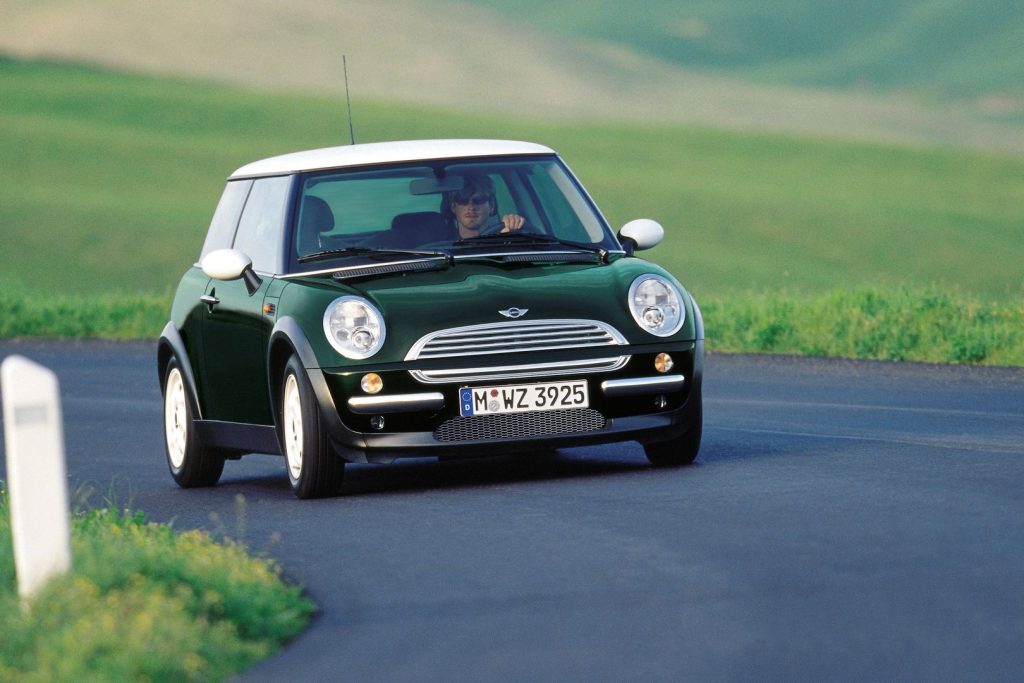
Instead of the previous fixed roll bars that killed rear visibility, it now uses pop-up units, restoring a small but welcome degree of rearward sight. The minuscule trunk now offers an expandable opening, and in true Mini fashion, a novelty gauge called the Openometer debuts. It tracks how long you’ve had the top down—not because you need it, but because Mini enjoys slipping in whimsical details like that.
Still, it’s worth acknowledging the Mini Cooper’s limitations. It’s not the quietest, most practical, or smoothest ride you’ll find in this category. If a plush interior, functional back seat, and a cushier ride are must-haves, options like the Volvo C30, VW GTI, or VW Rabbit might be better suited to your needs.
Convertible shoppers concerned with rear visibility or daily comfort might be better off in a Volkswagen Eos, though it’ll cost more. The Mazda Miata is also a solid alternative. But for sheer personality, standout styling, and impressive fuel economy, few cars mix it all together like the Mini Cooper does.
4. Fiat 500
It’s small, adorable, and emotional. If you go on vacation for more than 10 days, expect it to develop a complex. Electronics short out, batteries drain ridiculously fast, and random warning lights appear like they’re auditioning for a role in your next panic attack.
The Fiat 500 has transcended its role as merely a car; it has become a symbol of European automotive heritage. Over sixty years ago, it played a vital role in driving Italy’s growth.
Its original design was masterfully reinterpreted—much like how a black-and-white classic film is brought to life through colorization—and in 2007, the reinvented 500 made its return to the forefront of the automotive world. Today, this iconic little Italian car is powered exclusively by electricity.
In its modern form, the 500 has fully embraced electrification, discarding internal combustion engines in favor of an 87 kW electric motor. This motor is powered by a 42 kWh lithium-ion battery, with the charging port located on the vehicle’s rear side. The battery provides a maximum range of up to 320 kilometers under the WLTP testing cycle.
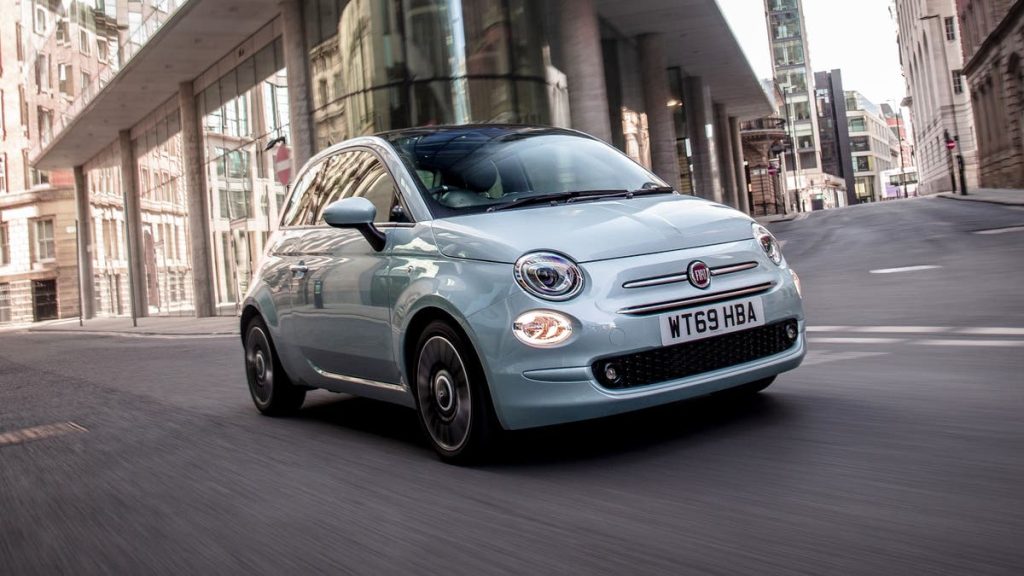
With this setup, the 500 accelerates from 0 to 100 kilometers per hour (0-62 mph) in 9 seconds and from 0 to 50 kilometers per hour (0-31 mph) in just 3.1 seconds. Its top speed is electronically limited to 130 kilometers per hour (93.2 mph).
The interior of the 500 emphasizes sustainability, incorporating a variety of recycled materials. A 7-inch TFT screen serves as the instrument cluster and is paired with a 10.25-inch touchscreen infotainment system, blending modern technology with eco-conscious design.
Charging the Fiat 500 is convenient and flexible. It comes equipped with a standard charging device that can be connected to a typical home 220V outlet. For those seeking faster charging capabilities, an optional wall-box charger is available. Additionally, the vehicle supports fast-charging at public stations, where it can reach 80% battery capacity in just 35 minutes.
5. Mercedes-Benz ML/GL (mid-2000s to early 2010s)
You need a small entourage just to maintain one of these. Let it sit too long and you’re looking at failed air suspension, a parasitic battery drain, and at least three unexplained error messages that require $400 diagnostics each. It’s fancy… until it’s not
If you’re the set-it-and-forget-it type, don’t get seduced by tech-packed luxury brands that look like a spaceship, they’ll punish you for neglect. Stick to simple, honest workhorses like old Toyotas, Hondas, and the occasional burly American sedan.
The Mercedes GL and ML are both part of the prestigious Mercedes-Benz SUV lineup, but they serve different purposes within that family. The ML was originally introduced as the brand’s midsize luxury SUV, appealing to those who wanted a combination of upscale features and nimble performance.
As Mercedes expanded its SUV offerings, it introduced the larger GL series to provide a full-size luxury alternative. The GL models were created with more spaciousness in mind, aimed at larger families or anyone needing extra room and versatility.
These SUVs offer three rows of seating and increased cargo space, making them ideal for those prioritizing utility. Meanwhile, the ML—later rebranded as the GLE—was designed with a sportier, more compact approach to luxury in the midsize SUV category.
Although the ML name has since been retired, comparisons between the ML and GL continue, particularly when discussing models built before 2020. In essence, the GL appeals to drivers who want a bold, spacious vehicle with a commanding road presence, while the ML suits those who prefer a slightly smaller SUV that emphasizes sporty luxury and driving dynamics.
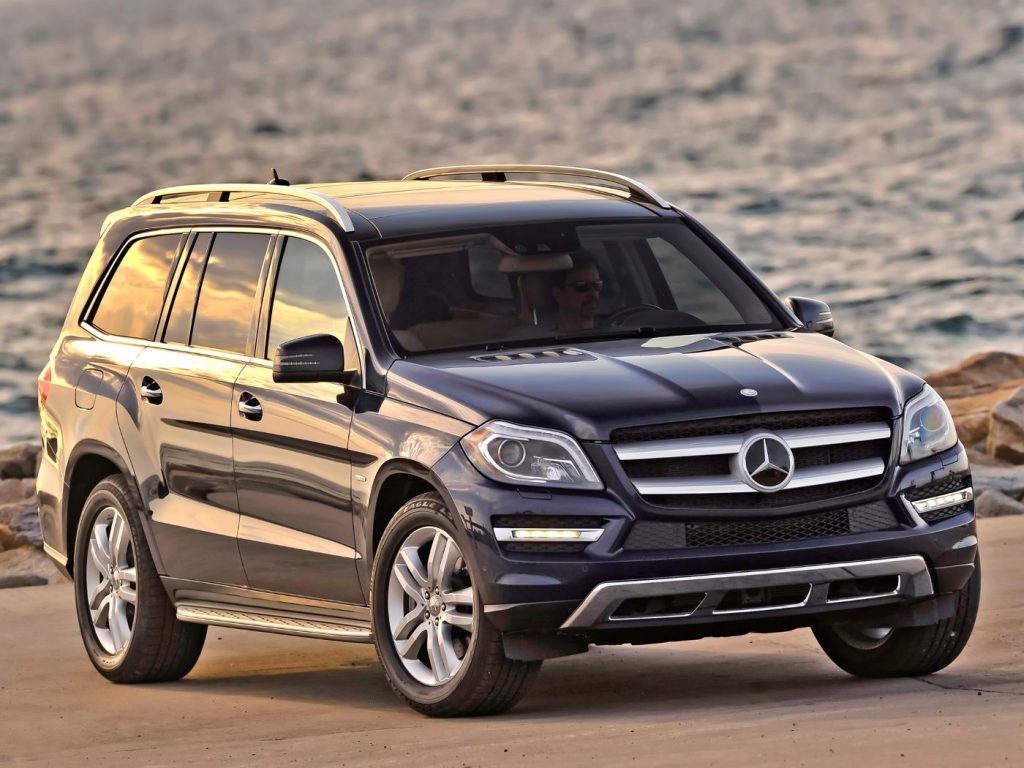
In terms of design and styling, the exterior differences between the GL and ML clearly highlight their distinct identities. The GL’s design reflects its size and status—it features a bold grille, a wide stance, and a squared-off body that reinforces its image as a powerful, full-size SUV. Its substantial dimensions are evident from every angle, giving it a presence that stands out.
By contrast, the ML sports a more sculpted and aerodynamic design, with smoother curves and a more compact, athletic profile. This sleeker look gives the ML a sportier vibe, making it feel better suited to city environments and urban commutes.
Design elements like the headlights, bumpers, and body proportions support these visual cues: the GL leans into its larger-than-life character with broader features, while the ML emphasizes a refined, agile aesthetic.
Ultimately, choosing between the two comes down to how bold you want your SUV to look and how much practicality or performance you value in your driving experience.
Cars that can handle abandonment are rare beasts; they’re not always sexy, but they’ll be there for you when you come crawling back.

